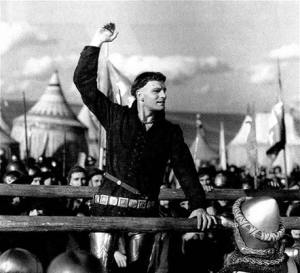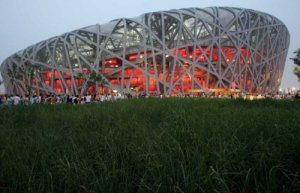In the wake of Eva’s recent post about the relative merits of New York and other progressive cities, it seemed like the right time to highlight a few good things happening locally (and elsewhere). All of the groups highlighted below are, in various ways, working to answer the question: how can the built environment in which we live be made to optimize our health, sanity and happiness?
One of the developments in community activism I’ve found most inspiring over the last few years is the emergence of the Livable Streets Movement, which works to “create sustainable cities through sensible urban planning, design, and transportation policy.”
One of the most enjoyable aspects of Streetsblog is the lively, civil, and informed policy discussion that unfolds more often than not in the comments section, facilitated by a well-formulated and executed policy artful enough to be worth quoting:
We work hard to maintain a high level of quality and collegiality in Streetsblog’s comments section. We may edit or delete ad hominem attacks, unnecessary or uncreative profanity, off-topic posts, lengthy or poorly written rants, flat-earth arguments and comments that we feel don’t add any real value to the conversation that’s underway.
I only wish this approach was more common online—collegial discourse, profane only when inspired and necessary.
The New York City activism component of the Livable Streets Movement is the New York City Streets Renaissance campaign, a collaboration between three wonderful groups: Transportation Alternatives (TA), the Project for Public Spaces (PPS), and the Open Planning Project (OPP).
Transportation Alternatives, which advocates for pedestrians, bicycling and public transit, may be familiar to many, but the Project for Public Spaces is slightly lower-profile and just as worthy of attention. PPS was founded in 1975 by William H. (Holly) Whyte (1917-1999), who may be second only to Jacob Jacobs as a heroic defender of good urbanism in theory and practice.
Whyte took a meditator’s approach to public space by starting with curiosity and opening to what arose out of it. Then as now, the architects who often design public plazas and other public spaces produced self-indulgent follies and imposed them on the public with a rhetoric of obfuscatory nonsense. Traffic engineers would design sidewalks and streets with ruthless, single-minded attention to moving cars around as efficiently as possible. In the face of this Whyte began to ask simply, is this working? How are these places affecting us? Discovering through his own direct experience and that of others that they seemed to hinder rather than help create vibrant city life, he founded the PPS to address the problem. Over thirty years later, their activities are still vital.
The activism of the groups mentioned above (and others) has been building for decades, but particularly in the last few years real gains have been made. Streetsblog recently named Janette Sadik-Khan, Commissioner of the New York City Department of Transportation, “A Reason to Love NYC in 2007.” Appointed in 2007 and replacing a dreadfully blinkered predecessor, Sadik-Khan has shown visionary leadership in creating a more pedestrian and bike-friendly environment in New York in the 16 months since she took office. Streetsblog has become regular reading for many city officials and others in positions of influence, and with more public officials like Sadik-Khan appointed the prospect of a significantly more habitable city is within reach.

